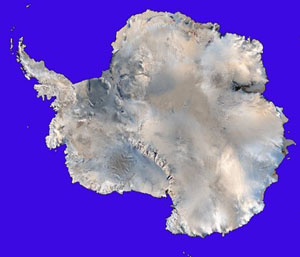The present environmental crisis over climate change hinges on the validity of global temperature measurements, observations of local conditions, such as changes in the ice caps, and computer models that scientists hope will allow them to forecast what might happen over coming decades.
However, there are several factors that may affect climate change significantly that are not properly included in current forecasting models. One such phenomenon is the movement of the major polar ice caps that may result from peripheral ice melting as temperatures rise. This in turn requires us to have a greater understanding of the processes at work when ice is under stress and what affects the way it moves and flows under extreme conditions.

Prof. Paul D. Bons
At a recent European Science Foundation (ESF) workshop in Göttingen, Germany, glaciologists, geologists, and experts in the processes of cracking under stress in other crystalline materials, notably metals and rocks, joined forces to discuss glacier movement from the molecular level up to the scale of ice-sheets. Integrating the processes at these different scales is necessary so that models capable of truly accurate predictions can be developed.
The behaviour of ice at the molecular level is well understood, but its properties at the crystal grain scale from 10 to 30 mm is not. All crystalline solids, including ice and metals have grains, but there is a large difference in ice grain properties depending on which direction it is measured – it has strong mechanical anisotropy, or irregularity.

Dr. Sérgio Henrique Faria
These processes are much less understood, and one could say they are more ‘messy’, explains geologist Paul Bons, of the Eberhard Karls University Tübingen, who co-chaired the ESF workshop, The challenge ahead is to convert the insight gained on the effects of grain-scale processes into improved rheological [viscosity and friction] models. Such models will help explain the behaviour of moving ice flows.

Ice sheets (Credit: NSF Polar Programs)
Bons points out that understanding grain-level interactions will help scientists construct a better model of ice caps, but will also improve our understanding of the processes occurring within the Earth’s mantle. The interesting thing here is actually the similarity between all these compounds, not the differences, explains Bons, Essentially the same processes occur in ice, minerals and metals.
It is important nevertheless to understand the differences says co-chair Sergio Faria of the University of Göttingen, Germany, because it is in the differences that the inaccuracies in ice flow models as they sit in climate prediction may be ironed out. The microstructures observed in ice core samples indicate the deformation mechanisms active in an ice sheet, explains Faria, Depending upon the sort of active mechanisms, the flow of an ice sheet may vary by orders of magnitude.
Co-chair Sepp Kipfstuhl of the Department of Glaciology at the Alfred Wegener Institute for Polar and Marine Research, in Bremerhaven, Germany, adds It was interesting to see at the workshop that the study of microstructures challenges standard models for polar ice…and the standard flow law of ice. This is an ‘inconvenient truth’ that complicates large-scale ice flow models, and hence impacts on climate modelling, he says.
Further reading
Prof. Paul D. Bons homepage
http://homepages.uni-tuebingen.de/paul.bons/
Dr. Sérgio Henrique Faria homepage
http://peggy.uni-mki.gwdg.de/Docs/faria/fariapers.html
Suggested searches
ice flow
climate models